Not wanting to spend a lot of money on decorating but wanting to beautify our living space, we decided to decorate using our many ideas and paint. Our ideas began with a decision on what atmosphere we wanted to convey. We first discussed if we wanted elegant and formal which was what we decided on for our dining room; romantic, as we decided for our bedroom; or casual and comfortable which is the design we chose for our kitchen and sitting area. For the foyer, we wanted to accentuate the high ceiling, make a subtle statement and have an area that would be a suitable background for some of our antiques. For this room, we decided on a conservative medieval-type of theme.
Kitchen and T.V. Sitting Area
After we had decided on our ‘casual and comfortable’ theme, colour was the next decision. For the kitchen area, we were limited to a colour that matched the counter and backsplash. And because the sitting area was a continuation of the kitchen, we continued the colour, with a slight variation to the design. Fortunately, the colour we chose highlighted the leather furniture, accentuating it when previously it had appeared almost nondescript. We also brought in some navy accents to pull together the colours from the dining room.
Materials Required For the Kitchen and T.V. Sitting Area:
Medium Plum latex paint ½” Masking Tape Paint Tray
Light Plum latex paint String, pencil & thumb tack Paint Roller, 1” brush
Crackle Glaze Large sea sponge
We painted the entire area with the medium plum latex paint, allowing time for it to
dry thoroughly. We then penciled the half-circle design we wanted on the wall by
tacking string at the bottom of the wall in the centre of the design area and with the string being the length of the height of the tallest section of the design, we drewthe half-circle. We then masked the top portion of the half-circle. On the bottom portion we painted the crackle glaze over the medium plum paint. This glaze can be painted over with the contrasting latex paint in approximately one hour to four days. In this case, we allowed it to dry approximately two hours before applying the light plum latex on top of the crackle glaze with a large sea sponge. We found we had to be fairly quick when working with the crackle glaze to avoid overlap lines but the effect we achieved was well-worth the effort.
Dining Room
For the dining room, we chose a colour that would match our dinner set which is a colour I have always thought of as elegant. We chose navy, deep blues and white with deep blue sheer side panels and a draped valance so that our beautiful view of the river would not be obstructed.
Materials Required For the Dining Room:
Navy latex paint ¼” masking tape
White latex paint Paint Tray
1” Brush, roller Enough molding to separate top portion from bottom
portion. A purchased border would work as
a division also.
We painted the top portion with a coat of white paint. (It may require two coats depending on the colour to be covered). When the white paint was dry, we taped the stripes on the upper portion in the design we wished. We chose a pattern of stripes 5” between each series. Each stripe grouping was a ½” stripe of navy, 1” of the white, a 1” strip of navy, 1” of white and another ½” strip of navy. Other series of stripes would be equally effective.
We then painted the bottom portion navy. The deep blue sheers were the only other item that was added to give the room the elegant and formal look we were hoping to achieve.
Bedroom and Ensuite
For the bedroom, we chose green for no other reason than that I feel it is peaceful and serene and is one of my favourite colours. We designed a partial canopy over the bed using a pale sheer green material and with the same material, made tied-back side panels. We put white tied-back sheers on the patio window with a darker green for the draped valance so as again not obliterate our wonderful river view. Very little sewing was required for any of the projects we did. We also made the headboard for our queen-sized bed by cutting the shape out of a piece of ½” plywood, gluing a 3” thickness of foam to the plywood and covering the entire surface with a textured green fabric. The tufting was done by using self-covered buttons in a material that matched the trim on some of our decorative cushions. The buttons were pulled through using fish line and stapling it to the back of the headboard. Again this project required no sewing. We completed the look by sewing cushions in various greens, plain and patterned, to finish the effect we wanted.
Materials Required For the Bedroom and Ensuite:
Medium latex green paint 1” masking tape
Light latex green paint 1” Brush, roller and paint tray
We painted the light green latex paint on the top portion of the wall in the bedroom and the medium green latex paint on the bottom portion of three of the walls. On the main wall that the headboard is against, we used the medium green paint. Using the 1” masking tape, we measured off 1” squares as a division between the light and green paint in a haphazard pattern and in the upper corners we continued with the same checkerboard theme.
On the main wall in the ensuite, we used the checkerboard theme with the squares being 5” which worked because of the size of the room. In a smaller room, the squares may have to be a little bit smaller.
Foyer
For the foyer we painted the walls a medium terracotta colour and when the paint had dried, taped the wall so as to get a concrete block effect. We then painted the entire surface with a crackle glaze. After leaving the crackle for approximately 24 hours, we sponged on a creamy colour which, after the crackling was complete, gave the wall a look of old concrete brick. We did the opposite around the window and doors in an arched design to get the full effect of the high ceiling, with the grout being the lighter colour and the bricks themselves being the terracotta colour. On the main wall, using the same technique, we painted three windows, attaching actual window boxes to the bottom of each window and placing terracotta pots filled with silk plants. It is subtle because of the colours we chose but gave the medieval effect we wished.
Materials Required For the Foyer:
Medium terracotta latex paint Large sea sponge
Medium cream latex paint ¼” and ½” masking tape
Roller, 1” Brush, Paint Tray Crackle glaze
The look is definitely one of texture rather than paint because people are constantly touching the wall to see what type of material we used for the project.
Bathroom
To bring a little life into our tired main bathroom, we decided to introduce a new colour to go with the shades of gray we already had in the floor and tile surrounding the tub. The counter, sink, cupboards and toilet were all relatively new so it was not an expensive project. We decided to put a design on the wall using a darker gray with a white wave of colour in the center running diagonally down the wall from one corner to the other and a lighter shade of gray on the top. The other walls were also done in the lighter shade of gray.
Materials Required for the Bathroom:
Dark gray latex paint 1” brush, roller, paint tray
Light gray latex paint ½’ masking tape
White latex paint
We first drew our pattern on the wall where the white wave was going to be painted. We then painted the light gray paint on the top portion of the feature wall and on the remaining walls. When the paint was dry, we masked the light gray portion off before painting our white wave. After the white was dry, we masked it off and then painted the dark gray bottom portion. We did the frame around the mirror in the same dark gray paint. The door, door frame and baseboards were painted white.
We used white towels and a white shower curtain with subtle accents of gray to finish off the project to give us the look we wanted.
Wednesday, April 6, 2011
Subscribe to:
Post Comments (Atom)

























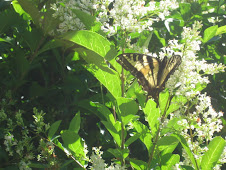
















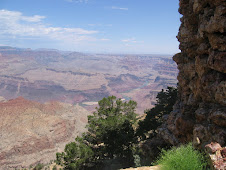
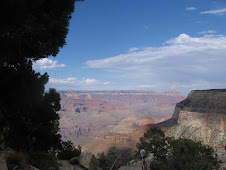





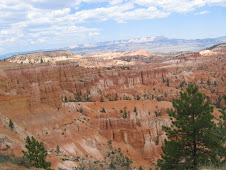




























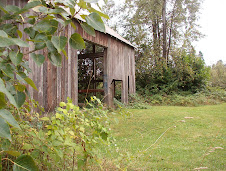






No comments:
Post a Comment